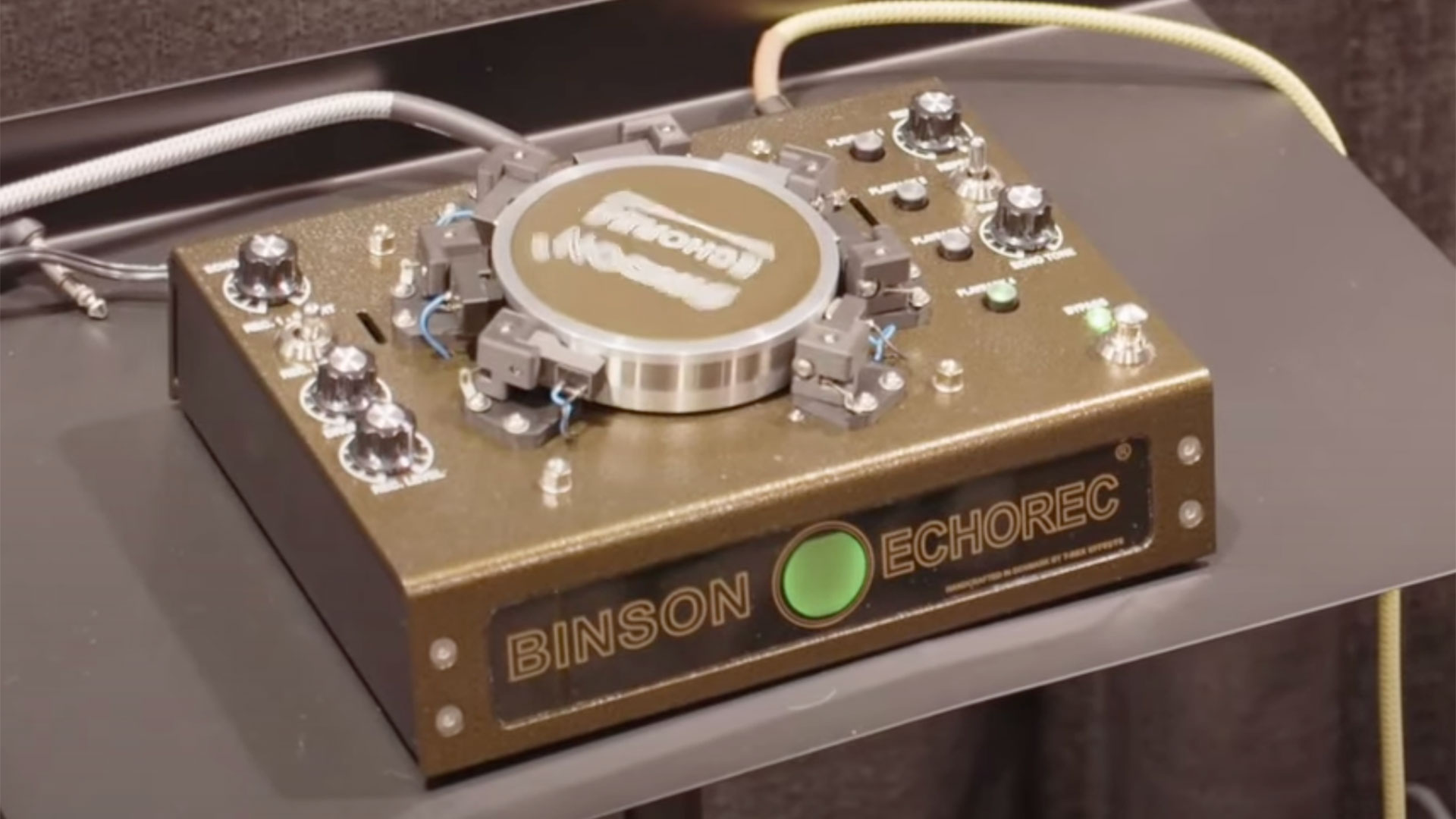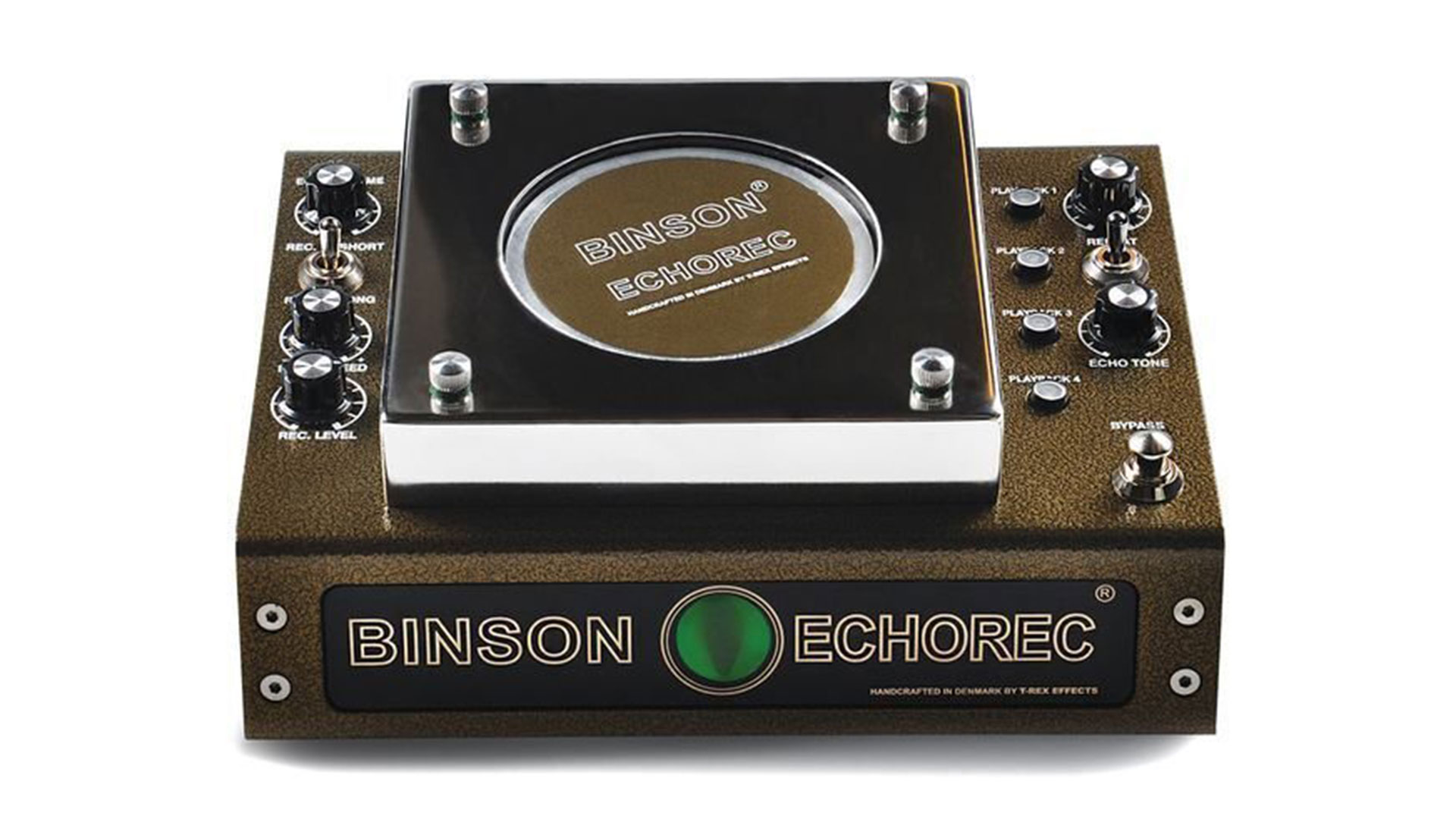NAMM 2023: T-Rex unveils stunning $2,100 Binson Echorec reproduction – a pedal version of the iconic delay that’s been seven years in the making
The Denmark-based pedal builder sets heads spinning with its reproduction of the analog delay unit beloved by Pink Floyd and Led Zeppelin

NAMM 2023: Danish effects firm T-Rex has been catching everyone’s eye at this year’s show with the long-awaited release of its Binson Echorec Magnetic Disk Delay – a reproduction of the original Echorec circuit, complete with spinning drum.
The original Echorec worked on a magnetic disk, which uses a thin wire, rather than a tape to imprint the delay signal. It is responsible for some of rock music’s most iconic delay sounds and was used heavily in Pink Floyd and Led Zeppelin recordings. Listen to David Gilmour’s guitar on Time or John Bonham’s ricocheting drum sound on ’Zeppelin’s When The Levee Breaks to hear it in action.
T-Rex says it’s spent about seven years trying to get it right and the new delay pedal slavishly recreates the original circuit, meaning you can use that unobscured, or you can switch in a few new options along the way.

As such, you now have a choice between two recording heads at the input stage: a long head and short head – the short head is spec’d to directly reproduce the original EchoRec’s timing, while the long head is a new option allowing you to capture a longer initial sample.
Another modern addition is a speed dial that allows you to vary the pace by +/- 20%, then there are four playback heads, which can be switched in and out using light-up push buttons.
The unit is all built into a (massive) stompbox, with what looks like a pretty bomb-proof enclosure for the rotating drum and it has a footswitchable bypass, so does not require connecting to an external footswitch. Holding down the bypass for three seconds stops the drum rotating – though, let’s be honest, that is the fun part.
Elsewhere, there’s a tone dial, which alters the EQ balance of the echo signal and a toggle switch to select between the echoing ‘repeat’ effect, or the reverb-like ‘swell’ setting.
Get The Pick Newsletter
All the latest guitar news, interviews, lessons, reviews, deals and more, direct to your inbox!
Another bung to modern standards is a choice of balanced or unbalanced I/O on the rear panel, which is handy in the studio (the destination for many of these units, we suspect, despite their relative portability).
Despite the tweaks, it looks like T-Rex has done an excellent job in maintaining the voodoo charm of the original. Not least, in the ‘magic eye’ tube indicator, which lights up and responds to input signal with a flickering green light. It gets brighter as the signal increases, enabling you to “see the saturation”, as T-Rex’s rep puts it in the clip above.
T-Rex reportedly has about 500 of these built now and they will retail for a (quite painful) price of $2,100.
However, when you compare that to the astronomical prices of used units, it starts to seem reasonable – especially as a cursory glance at Reverb shows prices ranging from $3,000 to $7,000 for the originals, depending on condition and model.
For more information on the (reborn!) Binson Echorec Magnetic Disk Delay, head to T-Rex.

Matt is Deputy Editor for GuitarWorld.com. Before that he spent 10 years as a freelance music journalist, interviewing artists for the likes of Total Guitar, Guitarist, Guitar World, MusicRadar, NME.com, DJ Mag and Electronic Sound. In 2020, he launched CreativeMoney.co.uk, which aims to share the ideas that make creative lifestyles more sustainable. He plays guitar, but should not be allowed near your delay pedals.
“The guitar is the instrument of the people”: The IGF Summer School celebrates 30 years of levelling up guitar players with a bumper Bath event
These are the gear trends that will shape your guitar buying in 2025: we explored every inch of NAMM to discover what brands are plotting for the next 12 months – and how the guitar gear world at large is changing









